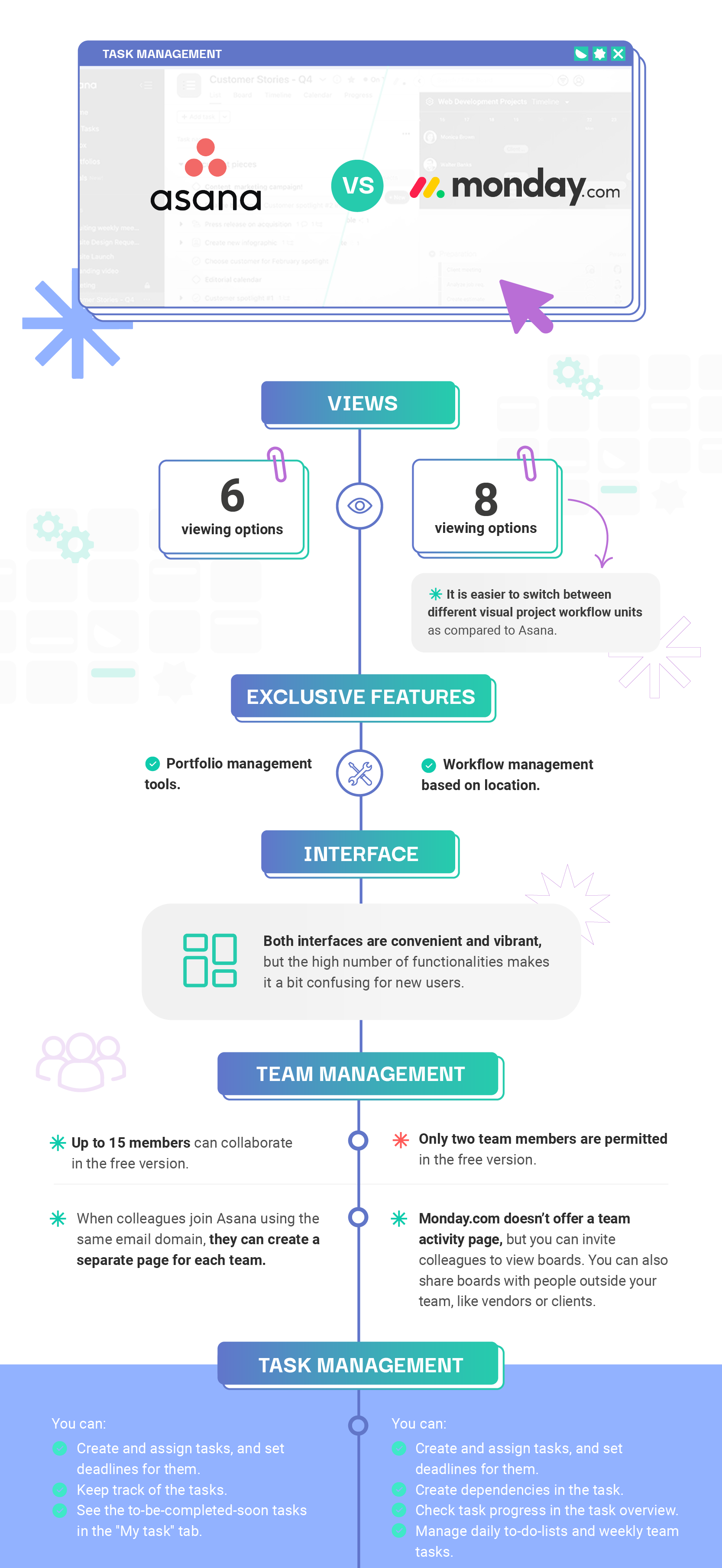Asana or Monday.com? Picking the right management tools

Deadlines, resource allocations, budgets, performance monitoring: how do architecture firms keep track of it all?
Well, we don’t know how they actually do it, but we know how they SHOULD be doing it: with project management softwares.
You’ve probably heard of Asana or Monday.com, the two management tools that have emerged as leaders in their game over the last few years. They keep workflows much more organized, as they help plan and execute projects and generate a clear and concise way of visualizing almost all important aspects of any task.
But since both are web-based services that use cloud-based storage, picking one over the other has become a source of great confusion: is one of these tools better? More practical, or easier to use?
In this post, we will break down the differences and similarities between the two. Take a look!⬇️?


It’s safe to say that both project management tools have some positive and some negative aspects. Asana offers more customizations and integrations, features a portfolio management section, and is more advanced in regards to team communications. However, it’s on the pricier side: Monday.com is much less expensive.
Apart from its cost, Monday.com’s benefits include its many data visualization options and its task management section, which is much more complete than Asana’s offer as it provides overviews of each task and allows assigning more than one person to them.
Overall, Asana and Monday.com are quite similar, and they harbor only slight differences. So really, the decision depends on your personal preferences or your organization’s particular needs (or budget!).
Subscribe to our newsletter
Highly curated content, write-ups, case studies, Bps updates, and more.
Related posts

The Future of Architecture: Exploring AI’s Transformative Impact
The Future of Architecture: Exploring AI’s Transformative Impact This article delves into the profound impact AI will have on architectural design, exploring its potential to revolutionize every stage of the process, from conceptualization to construction, and pave the way for a future of sustainable, smart, and innovative buildings. AI as the next evolution in Architectural…

Basic Cybersecurity to Protect Your Work: BetterSession #17
Understanding the basics of cybersecurity and how to protect our work and that of our clients is crucial for daily routines.

How to Create a Culture of Collaboration for Remote Architects
Are you part of the architecture industry, or a professional seeking to navigate the vast world of remote work? Whether you’re an architect looking to explore remote opportunities or a firm striving to manage the complexities of a distributed but still productive team, this extensive guide was perfectly designed to meet your needs.

How to Communicate Effectively with Remote Architects
Are you one of those innovative architecture or design firms that trusted successful remote teams? It is not always easy, but the challenge is 100% rewarding. Today we’re going to tackle a trend that’s changing the architectural landscape as we know it: outsourcing remote architects. Actually, answering this question: What is a Remote Architect?

#BetterSession 16: QuickBooks at Your Fingertips. Learn from Scratch!
QuickBooks is the leading accounting software used in the United States. It is easy to use and can help you automate tasks such as bookkeeping, invoicing, and expense tracking for free. It can also be useful for managing budgets and visualizing the profitability of your clients’ projects. Learn everything you need to know about this tool with María Sol Patané, a member of the #BetterTeam.

Artificial Intelligence in Architecture
Technology is having a tremendous impact on our industry. Embarking on a journey into Artificial Intelligence (AI) in architecture design, we are running into the tools, technologies, real-world applications, and exciting innovations transforming this field.
